Apple iPhone 6 plus vs Galaxy Note 4
iPhone 6 Plus vs Galaxy Note 4

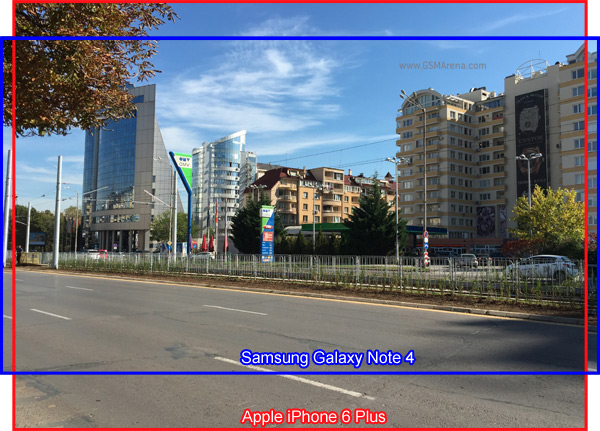

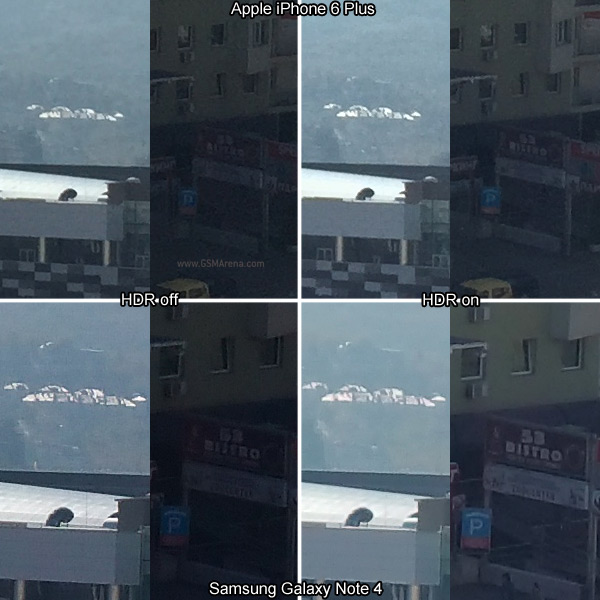
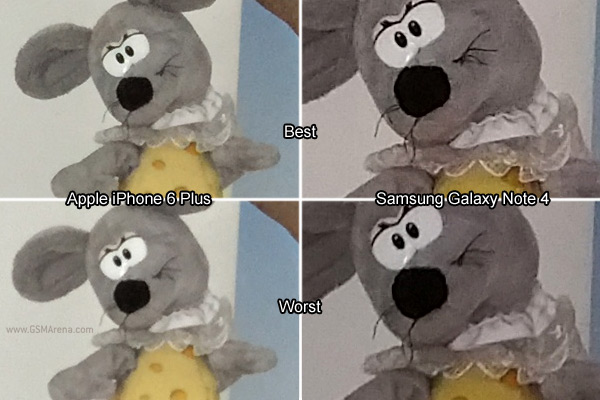



generation while the iPhone 6 Plus is Apple's first phablet ever.

Samsung's release cadence dictates that the Galaxy Note is the H2 flagship, keen to assert its superiority over an already feature-rich Galaxy S. iPhones come once a year, even the first-time iPhone 6 Plus phablet. The situation is similar though, the Plus is better equipped than the vanilla iPhone 6.
Apple iPhone 6 Plus over Galaxy Note 4:
- Thinner - 7.1mm vs. 8.5mm
- Phase-detection autofocus
- Slo-mo video - 240fps mode vs. 120fps mode
- 64GB and 128GB versions
- Tap-to-scan (no swipe) fingerprint sensor
- Dual-LED flash vs. single LED
Samsung Galaxy Note 4 over iPhone 6 Plus:
- Bigger, sharper display - 5.7" QHD vs. 5.5" 1080p
- Higher resolution still camera - 16MP vs. 8MP
- Better video recording - 2160p (stereo sound) vs. 1080p (mono)
- Expandable storage
- General-purpose NFC
- Heart rate and blood oxygen saturation sensors
- Better front-facing camera - 3.7MP/1440p vs. 1.2MP/720p
- Bigger, user-replaceable battery
- Faster LTE (on Snapdragon version only)
- Optional dual-SIM
Samsung is known for its feature-rich (some would say "overflowing"), utilitarian designs but it's slowly coming around to metal designs with the Alpha and now the Galaxy Note 4. It's just a metal rim, so the user-replaceable battery and microSD card slot are intact.
The screen size also remained unchanged (5.7") to keep the device manageable single-handedly, but resolution increased to QHD. The defining feature of the Note series, the S Pen, was also improved and Samsung included optical image stabilization (OIS) to the list of camera specs.
The biggest change for Apple is the screen - after years of keeping just about the same size and sharpness, the company took the plunge. The design language changed more than it did for the Galaxy and is now smooth and rounded like an iPod Touch, it's impressively slim too. It's the OIS-enabled camera that is the other advantage over the vanilla iPhone 6.
With bigger screens, both phones and their respective platforms (iOS and Android + TouchWiz) have their ways of boosting usability.
Hardware comparison
Both devices have roughly the same size. The Apple iPhone 6 Plus is taller but thinner than the Samsung Galaxy Note 4, which has the bigger screen. For years Apple was concerned about the usability of a device this size, but it has finally come around.
The iPhone 6 Plus shares its design with its sibling and has close connections to the iPod touch and the Apple iPad. This means a slender 7.1mm body that's all glass and aluminum. The sides are softly rounded, unlike the squared off sides of previous iPhones.
This makes the iPhone feel like a metal ingot in the hand but it's not without a downside - the round sides offer less grip. We're not happy either with the plastic strops on the back cover. They used to be thinner and better positioned on previous devices, now they just look too intrusive.
The top and bottom bezels are rather thick, making the iPhone 6 Plus taller than average for its screen size. Apple has tried to make up for it in the software - a double tap (not press) on the Home button brings the screen image halfway down to make top controls easier to reach. Even better, Apple took the first steps in capitalizing the extra screen real-estate with landscape mode and split-screen interface options on some apps (but not multiple apps).
Samsung refined its metal-and-leather design in the Galaxy Note 4. This time the rim is actual metal rather than plastic with a metal-like finish. The leather is still faux but, while looks can be faked, the in-hand feel of metal is tangibly more premium.
The Galaxy Note 4 is slightly thicker and taller than its predecessor, but the difference isn't too big. It's nearly half a centimeter shorter than the iPhone 6 Plus despite having slightly bigger screen. Hardware buttons put a lower limit on bezel size but Samsung managed to include its trio of buttons (complete with a fingerprint reader on the Home key) in less space than Apple. The top bezel is smaller too.
Samsung has offered a number of options to improve the one-handed use in software over the years but its real advantage lies in the mature Multi-Window implementation that lets you run two apps simultaneously. Bigger screens offer a better reading and media experience but, equally important, they make apps more efficient to use.
Let's break down the components by function. Apple put a wider aperture on its FaceTime camera but the essential specs - 1.2MP stills and 720p video - were untouched. It clearly has not bought into the selfie craze.
Samsung meanwhile settled on QHD for the front-facing camera's resolution - both for stills (3.7MP) and for video (1440p, three different names for the same thing). It's not quite an 8MP selfie machine but it complements the main camera well with the Dual Shot feature. The above-screen area also houses a gesture sensor used for some of TouchWiz's proprietary goodies.
Below the screen both phones have fingerprint readers. Apple's hardware just requires you to place your finger on the key, while Samsung requires a swipe. The angle of your thumb while you hold the phablet makes this uncomfortable so it takes some getting used to.
Samsung also has two capacitive keys below the screen, which simplifies the UI somewhat - a dedicated Back key means you don't have to reach for the upper-left corner and an App switcher key means the Home key doesn't have to take on multitasking duties. "Simpler is better" may as well be Apple's moto but when one key has so many uses (press, double-press, double-tap, long press) it starts to feel overloaded.
As both devices do an about-face, we find their backs are almost as interesting as their fronts. Apple drew some ire with the iPhone 6 family camera that protrudes from the slender chassis, but Samsung cameras have stuck out the back for quite a while now. At least, it doesn't make the phone wobble like the iPhone's.
The cameras themselves are quite interesting. Apple did a second polish on the iPhone 5 camera by adding phase-detection autofocus and optical image stabilization to the iPhone 6 Plus as the cherry on top of the vanilla iPhone 6 camera. The dual-LED flash is reshaped into a circle but it remains in place.
The Samsung Galaxy Note 4 camera has a new 16MP sensor with 16:9 aspect ratio. It seems it's a Sony sensor instead of Samsung's own ISOCELL, but either way it's Samsung's first phone camera with optical image stabilization. The higher resolution sensor also allows for 2160p video capture but we'll reserve the "resolution vs. framerate" discussion for a later chapter.
Both phablets have their Power keys on one side and their volume rockers on the other. The iPhone 6 Plus also has Apple's traditional Mute switch, which is by far the simplest way to silence your phone when necessary (in a meeting, in the theater, etc.).
Also on the side is Apple's nanoSIM slot, which can only be opened with a SIM eject tool. Samsung has positioned both cards - that is the microSIM and microSD - below the back cover. The SIM is blocked by the battery so it's not hot-swappable but the microSD is readily accessible.
Expandable storage has never been Apple's thing, but we keep hoping for a saner base storage option - your music library alone could top 16GB, plus an iOS upgrade can require as much as 5GB free, which means you'll have to delete stuff. We appreciate the more accessible 64GB option but we still think 32GB should have been the starting point, at least for the iPhone 6 Plus.
Apple has positioned the loudspeaker on the bottom and it's still a single piece. The Galaxy Note 4 has just the one loudspeaker as well, it's on the back, we'll find out which one is louder later on.
Winner: Samsung Galaxy Note 4. It may not be as thin as the iPhone, but it's roughly the same size while offering a bigger screen. It's easier to service too, with easily accessible storage and battery.
The Apple iPhone 6 Plus is impressively thin and as an all-metal device gets a bonus point, but bezels remain chunky and the device is completely sealed against user access. Apple does have the better fingerprint sensor.
Camera features
Before we dive into image quality, we'd like to quickly list camera features for both devices. Both manufacturers claim Optical Image Stabilization, but Apple also boasts phase-detection autofocus.
Samsung has that on the Galaxy S5's ISOCELL sensor, but the Galaxy Note 4 uses a Sony sensor and misses out. It's a 16MP sensor with 16:9 aspect ratio that's capable of 2160p@30fps video, plus 60fps and 120fps modes at 1080p and 720p respectively.
Apple does 1080p@60fps but goes up to 240fps at 720p for the best slow-motion mode yet. The iPhone 6 Plus also has a dual-LED flash to rely on in the dark. Both devices offer HDR modes for stills and videos, but the Apple phablet has that option in panoramas too.
There's not much for value-added features though - AE/AF lock, geotagging and face detection are about it.
True to self, Samsung loaded plenty of features. The Selective focus (which has become trendy recently) lets you change the focus point after taking the photo, Virtual Tour is an upgrade over regular panoramas (it lets you walk around as you shoot), Dual Camera combines photos taken with both front and back cameras simultaneously, while Rear-cam selfie automatically snaps a photo when your face is aligned just right.
The front-facing camera on the Galaxy Note 4 is good enough for selfies, it's a 3.7MP shooter that covers the QHD screen pixel for pixel. A slider controls automatic beautification. Better yet, you can download new camera modes.
Samsung has provided focus/exposure lock too, as well as geotagging and face detection. We already saw how the gallery app can sort photos based on people's faces.
Still image quality
The Samsung Galaxy Note 4 camera has a slightly wider Field of View (FoV), though the iPhone 6 Plus's 4:3 camera captures more of the scene vertically. Keep in mind here that a Note 4 camera sample measures 5,312px horizontally, while a 6 Plus shot is 3,264px and it has to draw just about the same detail.
The Galaxy Note 4 camera has double the total number of pixels and its native aspect ratio fits better on widescreen displays (like its own display and HDTVs).

The higher resolution is easy to see in the level of captured detail - the STOP sign is clearly legible in the Galaxy Note 4 photo, the foliage looks better, the fire escape and roof tiles on the second row are sharper too.
This crop also makes it easier to compare color rendering - the iPhone 6 Plus has a yellow tint, while the Samsung has a slight blue overcast.

Both cameras keep noise in control with comparable success. Through pixel peeping we noticed the Samsung leaves some traces of over-sharpening but nothing major.
Winner: Samsung Galaxy Note 4. A 16:9 camera fits better on modern screens (phones, tablets, laptops, TVs, almost everything is widescreen), but more importantly the Galaxy Note 4 photos offer a significant advantage when it comes to resolved detail.
The Apple iPhone 6 Plus takes good-looking photos, especially considering the camera has changed little since the iPhone 5. Still, it loses on the most important factor (resolved detail) and offers no tangible advantage in other aspects.
HDR
Dynamic range is another important quality of a good photo. The Apple iPhone 6 Plus photos have more noise in the shadows, while the Galaxy Note 4 manages to hide most of it while offering slightly better level of detail. It also tends to resolve brighter areas better - the sunlit roof of the mall features a rectangular grid, which is visible in the Note 4 photo and washed out in the iPhone shot.
This is a very difficult scene, heavily backlit and with dark, shadowy areas - a perfect opportunity to test the HDR modes of both devices.
The Galaxy Note 4 mode manages to bring out extra detail in the shadows (the Bistro sign is more legible) though the brightly lit areas become more washed out. The iPhone 6 Plus HDR option also improved rendering in the shadows (though not as much), again at the cost of washing out some of the highlights.

Winner: Samsung Galaxy Note 4. Its base dynamic range is wider and the HDR mode performs better.
The Apple iPhone 6 Plus did a respectable job and the Auto HDR mode is handy though the sensor is due for an upgrade.
Panorama
Both phones shoot panoramas at about the same resolution (despite the Note 4's advantage in stills) and they capture more detail than just about any other phone on the market (aside from their smaller counterparts, of course).
The iPhone 6 Plus didn't get the colors right - they look far too washed out - while the Galaxy Note 4 erred in the other direction - colors have candy-like saturation. We blame iPhone's issues on a boosted green channel (you can see the green tint in the gray tarmac and asphalt).
The Galaxy Note 4 has its own issues - the building in the middle of the frame is yellow/green, while the Note 4 rendered in white. Since the photo starts from a shadowed region, the phone just hits the limit of its dynamic range. Apple's HDR panorama saves it from a similar issue.
At stitching the iPhone 6 Plus proved marginally better and it captures a bit more detail in the shadows or rather applies less noise reduction, since shadows are grainier than the same areas in the Galaxy Note 4 panorama.
Image sharpness goes in favor of the Note 4 though no small part of that is that Samsung applies a heavier sharpening filter.
Winner: Draw. Detail is a trade-off made in processing - more or less noise reduction and sharpening. Don't get us wrong, these are some of the best panoramas around with tons of resolution and detail, but compared against each other they have several issues that prevent us from calling a winner.
And those are poor color rendering (both phones mangle that in different ways), the bleak contrast in the iPhone panorama and the magical, color-changing building in the Galaxy image.
Low-light stills
The Apple iPhone 6 Plus has a dual-LED flash, which should give it an edge over the Galaxy Note 4, which packs a single LED. But for the first tests we forced the flash off - smartphone flashes are good at close range only and oftentimes it's all up to the camera sensor.
With OIS on, both cameras can afford to drop the shutter speed quite low, something that's good for static scenes and not so much for action shots. Here the iPhone 6 Plus went all the way down to 1/4s, but that allowed it to keep ISO at a low 125. The Galaxy Note 4 shot at 1/10s, but needed a higher ISO of 400.
The results are pretty clear - the iPhone 6 Plus produced a detailed image with low noise and good colors. The Galaxy Note 4 image was noisier and the white balance is a bit off. Both phones perform fairly consistently when it comes to photos. Again, slow shutter speeds don't work well if there's movement in the scene.

We enabled the flash and the iPhone 6 Plus went up to 1/16s shutter speed, while keeping the ISO at 125. The Galaxy Note 4 again chose a faster shutter speed, 1/24s, and dropped the ISO to 250. The white balance issue is more pronounced and the image has a blue/purple tint.
The iPhone 6 Plus once again offers the better detail, though one photo is blurry. The new camera boasts phase-detection autofocus, which is supposed to prevent misfocused shots, while the OIS should soak up handshake. Somewhere down the chain something went wrong in this photo.

Winner: Apple iPhone 6 Plus. It missed one photo, but the overall results are noticeably better than what its opponent managed. It does so with very low shutter speeds though, which is going to be a problem if there's movement in the scene.
The Galaxy Note 4 color rendering needs a tuning, especially with the flash on. Its faster shutter speeds are nice on paper but the photos have noticeably less detail.
Low-light video
The Apple iPhone 6 Plus can't pull the slow shutter speed trick in video and predictably quality suffers. This gives the Samsung Galaxy Note 4 a face-saving opportunity.
The iPhone videos are noticeably noisier (complete with color noise) and appear softer, even compared to 1080p videos form the Galaxy Note 4. Compression smudges some of the resolved detail in 1080p, but with bitrate restrictions lifted in 2160p mode the Note 4's sensor shows what it's capable of and provides additional detail. Sharpening halos are plainly visible in places but in both resolutions the Samsung keeps the noise low.

Winner: Samsung Galaxy Note 4. It didn't do too hot in the still photo round, but it proved better at videos shot in the dark. The 2160p option came in handy - partly because of its higher bitrate, but the extra resolution wasn't wasted either.
The Apple iPhone 6 Plus relied on slow shutter speeds for photos (along the lines of 24fps), which it just can't do with video. The videos were softer and noisier than those of its competitor.
Samsung found a niche where it doesn't overlap with Apple - phablets - and launched the very successful Galaxy Note line, now in its fourth generation. There's a Note-branded series of tablets. With the Galaxy Note 4 Samsung is taking cautious steps towards a premium build, not just a boatload of features.

Apple, for once not in its usual pioneering role, joins the phablet market at its busiest and most productive time. With "premium" duly taken care of, Apple's challenge was to make the iPhone 6 Plus enticing enough to not get lost between the already bigger iPhone 6 and the iPad mini.
Cupertino introduces change very gradually to its star product, but things that worked for the iPhone 5 don't necessarily work for the iPhone 6 Plus. The bezels were okay on a 4" device, but they make the 5.5" phablet bigger than it needs to be. And the 8MP/1080p camera is showing its age, despite add-ons like OIS and phase-detection autofocus.
iOS 8 brought in new features to reach parity with Android in places where it was outdated, but Apple's only feature to make the big screen more useful was a split-screen mode for apps like we've seen on iPads. That won't bother iPad users who get the same treatment, but people looking to switch away from Android will definitely miss some features. That said, the new Apple chipset is as good as it gets on handheld.
Samsung has taken user's desire for a premium experience to heart and the Galaxy Note 4 in-hand feel matches its price tag. The screen was always a highlight for Galaxy flagships and the QHD Super AMOLED is great both indoors and outdoors. With thinner bezels the Note 4 fits more screen real estate in the same footprint too.
The TouchWiz software package fits every form of multitasking and comes with great multimedia apps out of the box. The Snapdragon 805 chipset could have done with some more GPU oomph to handle the extra pixels, but the Galaxy Note 4's battery life beats the iPhone hands down.
The camera shootout proved more interesting than we expected. In stills, Samsung easily comes out on top in broad daylight, but in the dark the iPhone 6 Plus was better. In video, it was a tough decision too - it's hard to argue with Galaxy Note 4's 2160p skills but Apple's stabilization and 240fps mode cannot be easily overlooked.
In the end, both devices open the doors for people looking to jump from one platform to the other. The iPhone 6 Plus brings beefier specs and a more customizable iOS 8 to draw in Android power users. The Galaxy Note 4 brings a premium exterior to match the advanced interior and might tempt quality-conscious iPhone users looking for more features and freedom.
The net result of such platform jumping is hard to predict but we hope we made your choice easier. Where the Apple iPhone 6 Plus and the Samsung Galaxy Note 4 overlap there's a clear winner more often than not. It's all up to you now to pick the wins you care about.
Subscribe to:
Post Comments
(
Atom
)



































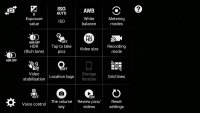
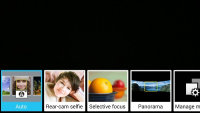

















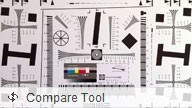

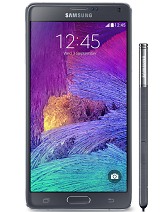




Really excellent article regarding the apple iPhone and the samsung mobile. It was really amazing. Thanks for sharing.
ReplyDeleteiphone service center in Chennai